Scoliosis (abnormal curvature of the spine) can be a frightening diagnosis for parents and their children. We can help parents and children, along with other healthcare team members, understand scoliosis and ways orthotic treatment can help. Treatment is typically directed by a specialized orthopedist or physiatrist. The healthcare team supporting the directing physician may include a physical therapist, orthotic clinician, and other relevant physicians or healthcare providers. The curvature of the spine may be monitored, treated with a scoliosis TLSO (back brace), or surgically corrected.
This page focuses on Del Bianco P&Os unique partnership with Grant Wood and the Align Clinic in San Mateo California and the Wood Rigo Cheneau (WCR Brace) we can provide patients here in our clinics.
Table of Contents
- › What is a Rigo Cheneau type scoliosis TLSO?
- › Why is 3-dimensional correction such a big deal?
- › How do I get a Rigo Cheneau TLSO?
- › Who is Grant Wood and what is the Wood Cheneau Rigo (WCR) TLSO?
- › How is Del Bianco P&O connected with the Align Clinic?
- › Is the effort and cost of a Rigo Cheneau style TLSO worth it?
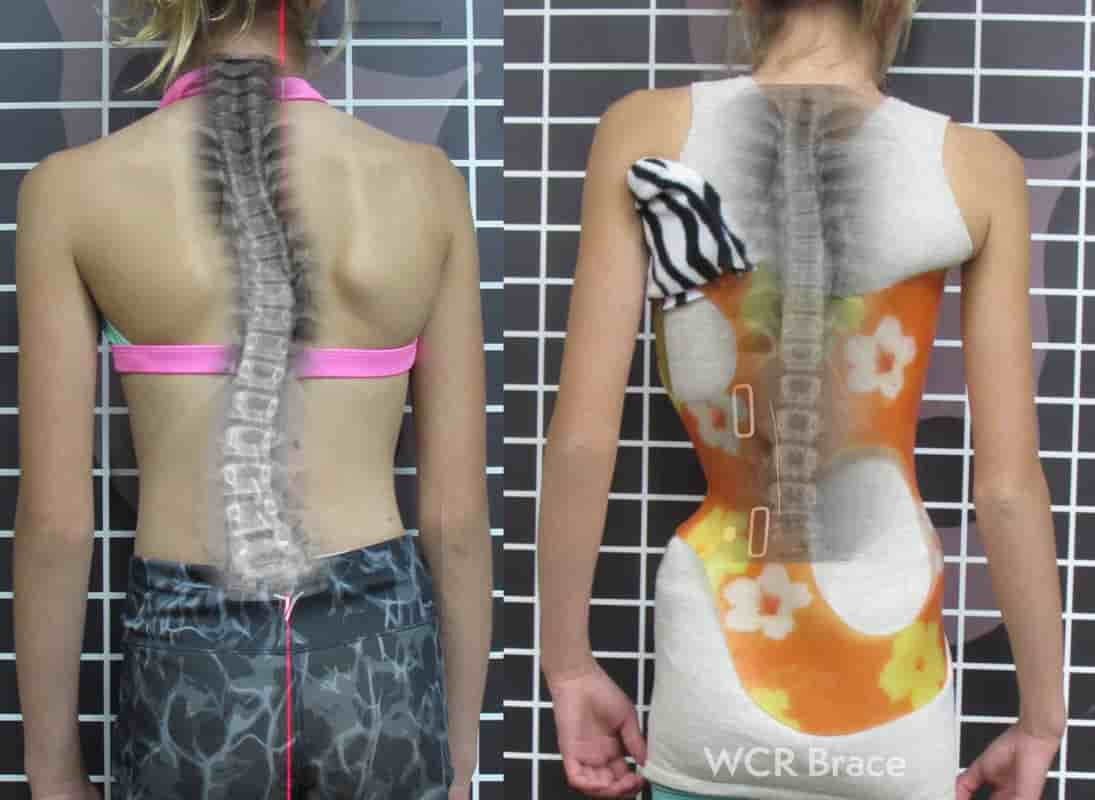
The patented Rigo Cheneau type TLSO developed by Grant Wood known as the WCR TLSO
What is a Rigo Cheneau type scoliosis TLSO?
For decades the “gold standard” scoliosis orthosis was the Boston Style. The Boston design has been authoritatively proven to be better than no treatment in terms of preventing the spinal curves from progressing to the point surgery is needed. This treatment, however, focuses on a one-dimensional correction. The traditional TLSO is symmetric in shape and applies pressures to the convex side of the curves. The body is squeezed inside the symmetric shape of the TLSO and the curves are corrected as much as possible.
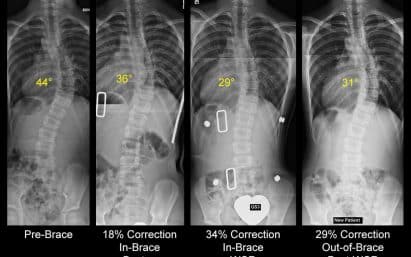
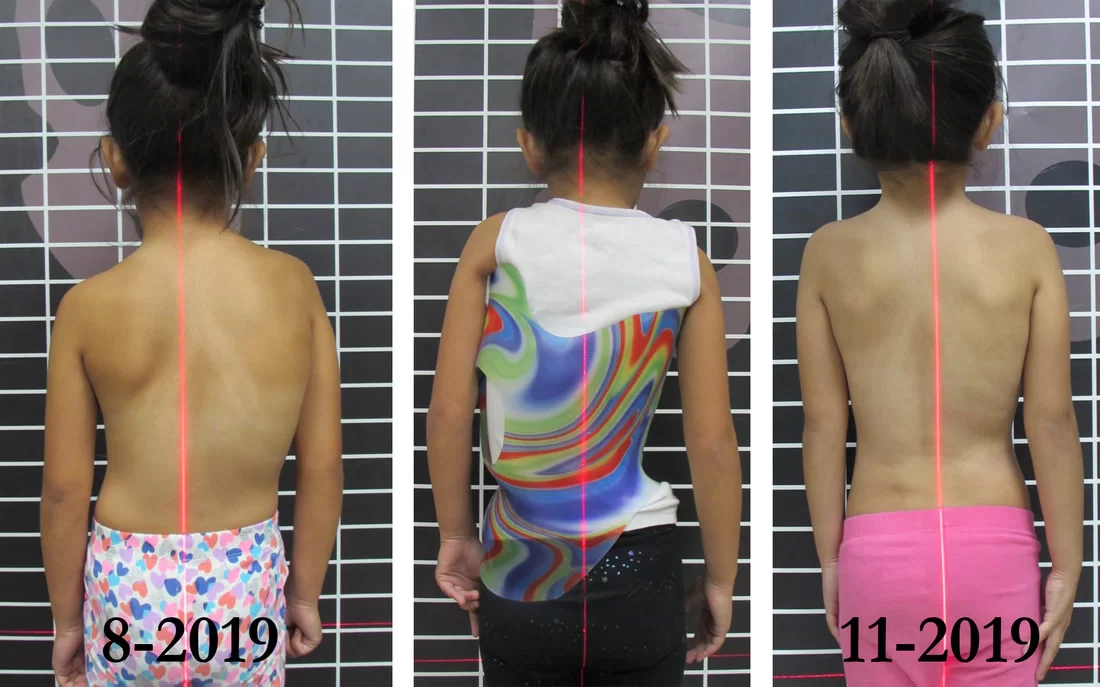
These X rays illustrate a comparison between the Boston style and the WCR. The furthest right picture shows the correction achieved at the end of treatment.
When you look at the curves on an X-ray from back to front, they are improved. Much of the rest of the body is ignored. This is important to note because all scoliosis is tri-planar, meaning not only do all curves show a bending of the spine when viewed back to front, but the curves also twist when viewed top to bottom and flatten when viewed side to side. These scoliotic deformities can be seen clinically in patients with scoliosis. Rib humps can be observed on the convex side of curves. One shoulder may sit higher than the other. The hips and torso can be twisted or translated in relation to each other. The normal flow of the spine when viewed from the side may be abnormally straight, referred to as “flat back”. All these observations are evidence of the 3-dimensional nature of scoliosis. The Boston Style TLSO only addresses one of these deviations/dimensions with a focus on correcting curves as viewed in the X ray from back to front with little to no thought regarding the way a patient’s body appears.
Dr. Cheneau, a French physician, began developing a TLSO that focuses on correcting the spine in 3-dimensions in the 1970s. His work was influenced and works in conjunction with a specialized physical therapy method used to treat scoliosis known as the Schroth Method. This therapy focuses on breathing and exercises that are intended to de-rotate, elongate, and stabilize the spine in 3-dimensions. The design of Dr. Cheneau’s TLSO works in conjunction with the Schroth Method to achieve the same 3-dimensional correction.
Dr. Rigo, a Spanish physician practicing in Barecelona, collaborated with Dr. Cheneau in the late 1980s and 1990s to further understand and refine Dr. Cheneau’s original design. Dr. Rigo’s work has been ongoing since that time and benefited thousands of patients with scoliosis at his clinic in Spain. The Rigo-Cheneau TLSO is a very complex device that treats all 3-dimensions and follows a unique curve classification protocol developed by Dr. Rigo. These classifications are critical to ensure that the TLSO is fabricated correctly to treat the scoliosis in a proper way.
Of note, in 2009 Dr. Rigo founded the Barcelona Scoliosis Physical Therapy School that certifies physical therapists in the Schroth Method. You can learn more about the Schroth Method and find certified Physical Therapists in your area at http://www.bspts.net.
Jay Mosesson, PT. DPT, cert. MDT, certified Schroth Therapist is a local physical therapist at Active Spine Physical Therapy who specializes in treating scoliosis following the Schroth method. If you’re interested in Schroth physical therapy, we can recommend Jay Mosesson. Click here for his website.
Why is a 3-dimensional correction such a big deal?
3-dimensional correction is huge when it comes to patient outcomes and satisfaction! 3-dimensional correction means, unlike the Boston, the TLSO is designed to not only keep the curves from getting worse as seen on an X-ray, but to correct as much as possible the way the body looks. Every attempt is made to decrease the noticeable effects of scoliosis such as rib humps, uneven shoulders, hips which are translated or rotated, and centering the head over the pelvis.
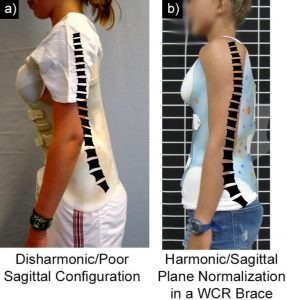
The picture on the left shows a traditional one dimensional scoliosis TLSO. Notice the loss of the normal flow of the spine as viewed from the side. The picture on the right shows the same patient in the WCR TLSO and illustrates the normal, posturally correct profile achieved in the design. Both devices can be considered a success in terms of the curves being reduced on an X-ray, but only a three-dimensional design can also treat the spine when viewed from the side or the top.
How do I get a Rigo Cheneau TLSO?
The only way to get a Rigo Cheneau TLSO is to go to Barcelona and see Dr. Rigo in his clinic! Dr. Rigo has expressed concerns in articles and research that the high standards the Rigo Cheneau TLSO requires are not being followed as closely as they should be. Dr. Rigo prefers the term “Rigo Cheneau Type TLSO” which indicates that someone has created a device utilizing the principles taught by Dr. Rigo to the best of his/her knowledge. It means that Dr. Rigo is not personally overseeing or monitoring the application of his principles in most devices being offered as “Rigo Cheneau TLSOs”. When these principles are incorrectly applied, they can make curves worse or cause other deformities. For this reason, the Boston remains a much better application for clinicians who don’t have the training and expertise the Rigo Cheneau TLSO requires.
Who is Grant Wood and what is the Wood Cheneau Rigo (WCR) TLSO?
Grant Wood is a certified orthotist who has dedicated 30 years of his professional career to treating scoliosis with Rigo Cheneau type TLSOs. Mr. Wood has worked personally with Dr. Rigo in Spain for a decade before coming back to America and opening the Align Clinic in San Mateo California. Grant Wood, at the recommendation of Dr. Rigo, has created the Wood Cheneau Rigo (WCR) TLSO. The WCR TLSO is a scoliosis device that follows very closely the classifications Dr. Rigo has created for the optimal design of Rigo Cheneau TLSOs. Grant Wood and the Align Clinic have the skills and the experience to properly fit and design the WCR TLSO. The Align Clinic remains in contact with Dr. Rigo personally to stay abreast of the developments and expertise that Dr. Rigo brings to scoliosis treatment.
→ These pictures show the progression of treatment from start to finish in the WCR TLSO. The goal of orthotic treatment is to prevent surgery and curve progression. Permanent correction, as shown in these pictures, is not always possible but every effort is made in the WCR TLSO to get every bit of correction each patient’s body will accept and tolerate.
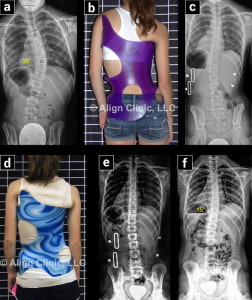
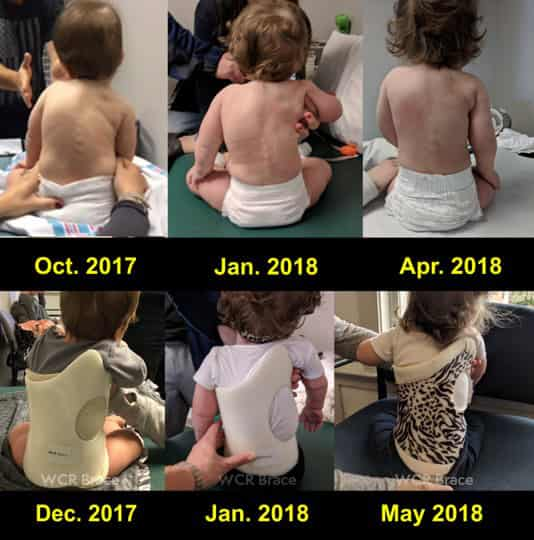
The WCR TLSO can be used to treat infantile and juvenile cases of scoliosis as well.
How is Del Bianco P&O connected with the Align Clinic?
Del Bianco P&O put a lot of effort into finding the best way to learn and be trained in the proper Rigo Cheneau TLSO methods. When Del Bianco P&O connected with Grant Wood and the Align Clinic we knew immediately, in our view, no one is doing a better job in the country than Grant Wood and the Align Clinic when it comes to following the true Rigo Cheneau principles. Jim Del Bianco, CPO, Chandler Balkman, CPO, and Jillian Hitchcock, CPO traveled to San Mateo in late 2019 and spent a week with Grant Wood and the Align Clinic. They listened to lectures, studied research articles, evaluated, fit, and followed up with patients alongside Grant Wood and his tremendous team at the Align Clinic as part of their training in the WCR TLSO. Del Bianco P&O’s team of clinicians were extremely impressed by the WCR TLSO and the care and concern for individual patients shown by Grant Wood at the Align Clinic.
Del Bianco P&O provides, under Grant Wood’s direction, the true WCR TLSO. All devices are evaluated and fabricated by the Align Clinic. In addition, Mr. Wood consults with our trained clinicians as needed and continues to provide education and oversight via webinars and consultations. Del Bianco P&O’s team of WCR clinicians will evaluate each patient and work closely with the Align Clinic to provide patients the very best Rigo Cheneau type TLSO custom made to an exact mold or scan of every patient. We are confident patients are receiving the best possible treatment for scoliosis that can be obtained in this country when they are properly fit with a WCR TLSO.
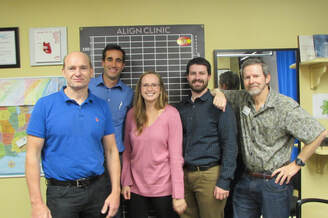
Left to right: Grant Wood with Align Clinic, James Del Bianco, CPO, Jillian Hitchcock, CPO, Chandler Balkman, CPO, Paul Burnette with Align Clinic
Is the effort and cost of a Rigo Cheneau style TLSO worth it?
This is a question that each family and patient will have to answer for themselves. The WCR TLSO does best when patients are committed to the full-time wear schedule and the follow up required. Del Bianco P&O can provide the expertise, along with the Align Clinic, to ensure that you are fit with the best possible Rigo Cheneau Type TLSO available. When patients are compliant with the wear schedule and the TLSO is properly made, fit, and followed up with, the results can be amazing.
The Wood Cheneau Rigo (WCR) TLSO is the culmination of decades of effort, work, and research by talented individuals who have dedicated their professional lives to helping patients with scoliosis. The WCR focuses on correcting the curves and clinical/visual presentation of the patient in 3 dimensions. This focus on the appearance of the patient and the curves, as viewed on X rays, is unique to the WCR TLSO and there is no current method doing more than this for patients with scoliosis.
One of the best articles, written by Dr. Rigo, explains the purposes and goals of 3D correction in scoliosis orthotic treatment is here.

